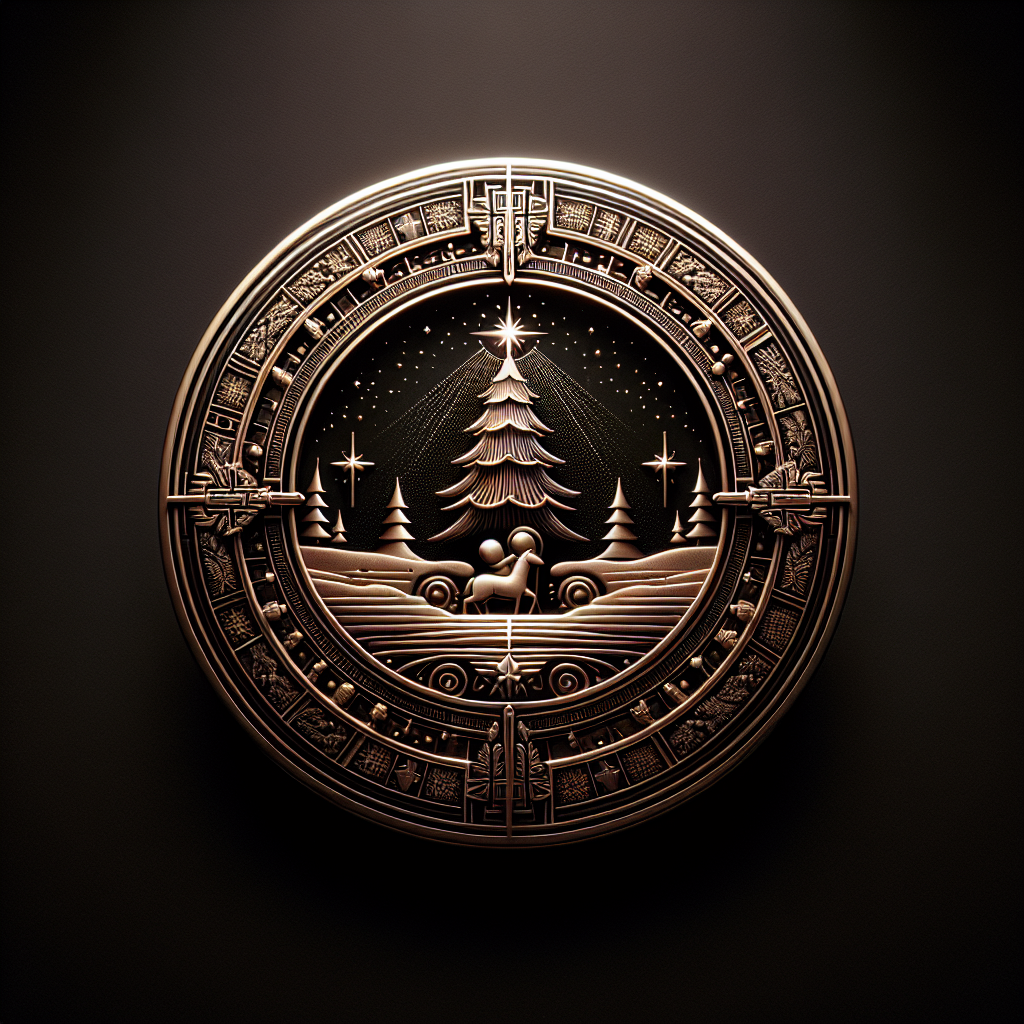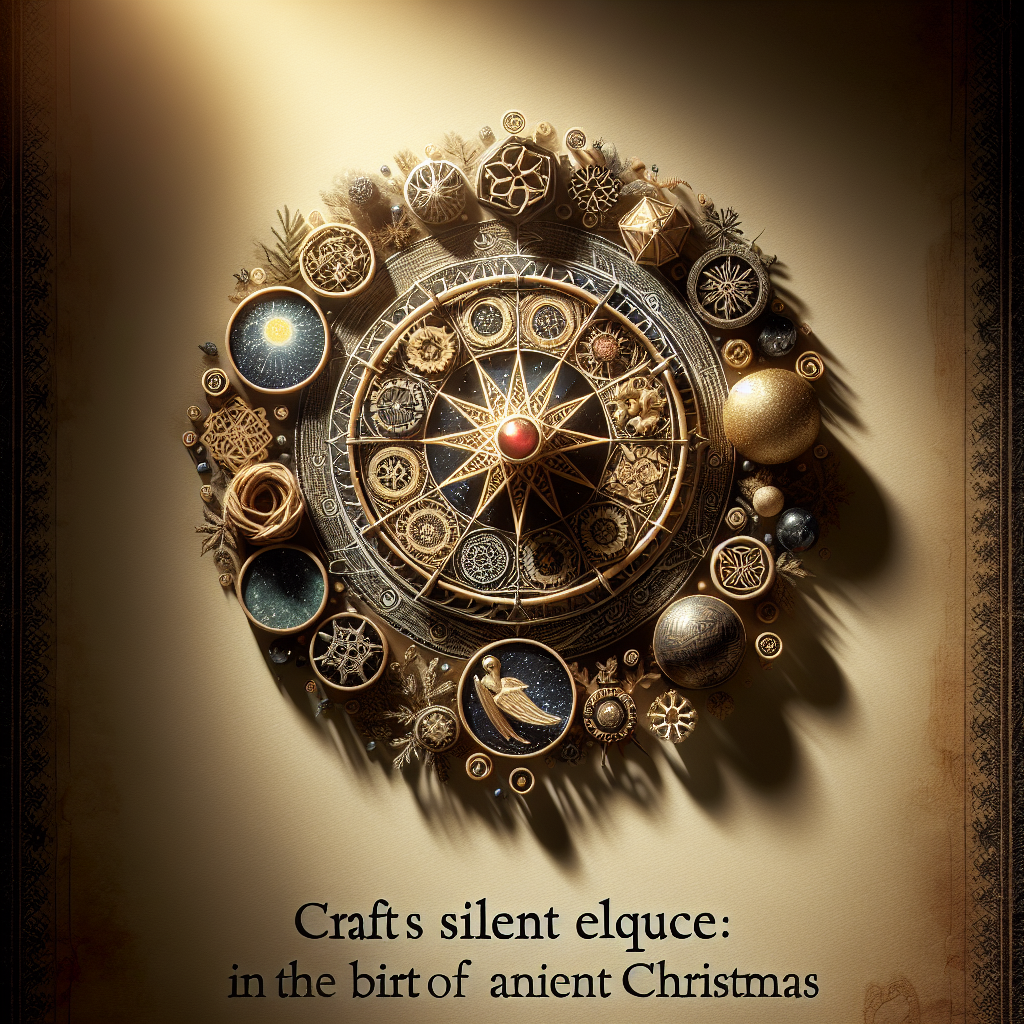Imagine a time long ago when the world was filled with darkness, a time when the hope of something greater seemed to fade away with each passing day. Then, like a ray of sunshine breaking through the clouds, Christmas arrived. But have you ever wondered why this magical holiday came to be? In this article, we will explore the origins of Christmas and uncover the fascinating reasons behind its inception. From ancient traditions to the birth of a baby in a humble manger, this is the captivating story of why Christmas began. So, sit back, relax, and embark on a journey through history as we unveil the enchanting tale of Christmas.
Table of Contents
The Origins of Christmas
Christmas, the beloved holiday celebrated around the world, has a rich history that spans centuries and encompasses various cultures and traditions. This festive occasion, centered around the birth of Jesus Christ, has evolved and absorbed influences from pagan celebrations, Roman customs, and Christian beliefs. Through this comprehensive article, we will explore the origins and evolution of Christmas, the controversies surrounding its date, the traditions and legends associated with it, and its significance in different cultures and religions.
Pagan Roots
To truly understand the origins of Christmas, we must delve into the ancient pagan celebrations that predate Christian traditions. Many of the customs and symbols associated with Christmas, such as the Yule log and the use of evergreen trees, can be traced back to pagan rituals. The winter solstice, a significant event in many ancient cultures, marked the shortest day of the year and was often celebrated with festivities and feasts. These pagan rituals became intertwined with the Christian celebration of Christmas over time.
Roman Influence
The Roman Empire, known for its vast influence across Europe and beyond, played a pivotal role in the early celebrations of Christmas. The Romans introduced various customs and traditions that are still observed today. Saturnalia, an ancient Roman festival held in late December, involved feasting, gift-giving, and a temporary reversal of social roles. This festival’s jovial atmosphere and spirit of giving undoubtedly influenced the development of Christmas celebrations as we know them today.
Christianization of a Pagan Festival
During the 4th century, as Christianity gained prominence, efforts were made to Christianize existing pagan festivals and practices. December 25th was chosen as the date to celebrate the birth of Jesus Christ, coinciding with several existing Roman festivals, including the birth of the unconquered sun god Mithras. By embracing the date and incorporating elements of pagan celebrations, early Christians sought to bridge the gap between their newfound faith and traditional customs, making the conversion more accessible for the general populace.
Early Celebrations of Christmas
The Birth of Jesus
At the heart of Christmas lies the celebration of the birth of Jesus Christ. According to Christian teachings, Jesus was born in a humble stable in Bethlehem, an event marked by immense joy and reverence. Early Christian communities began commemorating this momentous occasion through worship, prayer, and festive gatherings. The birth of Jesus became the focal point of Christmas celebrations, setting the stage for centuries of traditions and customs to develop.
Nativity Scenes and Plays
The concept of reenacting the nativity scene, depicting the birth of Jesus, can be traced back to the 13th century. These nativity scenes, often displayed in churches and homes during Christmas, allowed the faithful to visually connect with the story of Jesus’ birth. Over time, the tradition of nativity plays also emerged, involving live performances that brought the biblical narrative to life. These nativity scenes and plays continue to be cherished aspects of Christmas celebrations, reminding us of the true meaning behind this festive season.
Saint Nicholas and Gift-Giving
Saint Nicholas, a Christian saint known for his acts of generosity, became an integral part of Christmas celebrations. Born during the 4th century in what is now modern-day Turkey, Saint Nicholas was revered for his kindness and compassion towards the poor and needy. The tradition of gift-giving during Christmas can be attributed to the influence of Saint Nicholas. In many cultures, children eagerly anticipate the arrival of this benevolent figure, better known as Santa Claus, who delivers presents on Christmas Eve.

The Date Controversy
Winter Solstice Celebrations
Prior to the adoption of December 25th as the date for Christmas, various winter solstice celebrations were already taking place around the world. These solstice festivities were deeply rooted in pagan beliefs and revolved around the rebirth of the sun, symbolizing hope and renewal. The merging of pagan winter solstice celebrations with the Christian celebration of Christmas allowed for the preservation of certain traditions and the incorporation of new ones.
The Influence of Mithraism
In ancient Rome, the cult of Mithras worshiped the god Mithras, whose birth was commemorated on December 25th. This religious sect held great influence during the rise of Christianity, and the selection of December 25th as the date for Christmas may have been influenced by the desire to overshadow the popularity of Mithraism. By adopting this date for the Christian celebration of Jesus’ birth, Christians not only aligned themselves with existing celebrations but also diminished the significance of Mithraic festivities.
The Adoption of December 25th
The adoption of December 25th as the official date for Christmas can be traced back to the 4th century, when Emperor Constantine embraced Christianity. This significant event marked the beginning of a new era for Christians, and the merging of their customs with existing pagan festivals offered an opportunity to spread their faith and foster acceptance within the Roman Empire. Over time, December 25th became synonymous with Christmas, ultimately solidifying its place as the cornerstone of this annual celebration.
Christmas Traditions and Legends
The Yule Log
The Yule log, a tradition originating from pagan rituals, has long been associated with the Christmas season. In ancient times, families would gather around a large log, often from an oak tree, and light it as a symbol of light and warmth during the darkest time of the year. This tradition eventually evolved into the Yule log cake, a delicious dessert resembling a log, which is still enjoyed in many cultures today. The Yule log serves as a tangible reminder of the ancient origins of Christmas celebrations and the enduring spirit of unity and togetherness.
Christmas Trees
Perhaps one of the most iconic symbols of Christmas, the Christmas tree has a fascinating history that can be traced back to ancient civilizations. Evergreen trees, which remain green throughout the year, held special significance for many cultures, representing fertility, eternal life, and rebirth. In Germany, the tradition of decorating evergreen trees during the holiday season became widespread in the 16th century and quickly spread to other parts of Europe. Today, the Christmas tree stands as a colorful and vibrant centerpiece that embodies the joy and splendor of the Christmas season.
Santa Claus and His Origins
The jovial figure of Santa Claus has become synonymous with Christmas, but his origins can be traced back to various historical figures and legends. Saint Nicholas, a revered Christian saint known for his charitable acts, served as a primary inspiration. Over time, different cultures adopted and adapted the concept of gift-giving figures, each with their own unique attributes. The modern depiction of Santa Claus as a rotund, jolly man in a red suit can be attributed to the influence of the Coca-Cola Company’s 1930s advertising campaigns. Today, Santa Claus represents the spirit of giving and joy that permeates the holiday season.

The Evolution of Christmas
Medieval Celebrations
During the Middle Ages, Christmas celebrations took on a more festive and boisterous nature. Feasting and merrymaking were common, and social hierarchies were often temporarily disrupted. The Twelve Days of Christmas, which extended from Christmas Day to the Feast of Epiphany, were filled with music, dancing, and elaborate theatrical performances. This period also witnessed the rise of caroling, with groups of singers traveling from house to house, spreading joy and celebrating the birth of Jesus.
Protestant Reformation and Christmas
With the advent of the Protestant Reformation in the 16th century, attitudes towards Christmas underwent significant changes. Protestant reformers, such as Martin Luther, sought to simplify religious practices and emphasize a more personal connection with God. As a result, some Protestant denominations discouraged or even banned certain Christmas traditions, viewing them as remnants of Catholicism. However, many of these traditions persisted among the general population, and Christmas continued to evolve as a blend of religious and cultural practices.
Victorian Christmas Revival
The Victorian era, spanning from the mid-19th century to the early 20th century, witnessed a resurgence of interest in Christmas traditions. This period was marked by the reign of Queen Victoria, whose love for the holiday greatly influenced popular culture. Christmas cards, Christmas crackers, and elaborate decorations became widespread during this time, as families embraced the spirit of Christmas with enthusiasm. Charles Dickens’ timeless novel, “A Christmas Carol,” also played a significant role in promoting the values of charity, family, and goodwill that have come to define the modern Christmas celebration.
Globalization of Christmas
Christmas in the Americas
As European settlers traveled to the Americas, they brought their Christmas traditions and customs with them. However, the melding of different cultures and the influence of indigenous traditions gave rise to unique Christmas celebrations in the New World. In North America, the blending of European customs and Native American traditions contributed to the development of distinct holiday traditions. Over time, Christmas in the Americas became a vibrant and diverse amalgamation of customs, with each region adding its own unique twist to the celebrations.
Christmas in Europe
In Europe, Christmas is celebrated with great fervor and a sense of cultural pride. Each country within the continent has its own distinct set of traditions and customs. From the elaborate Feast of Seven Fishes in Italy to the festive Christmas markets of Germany, Europe offers a plethora of rich and diverse celebrations. The exchanging of gifts, the lighting of Advent candles, and the singing of carols are common threads that connect European Christmas traditions, showcasing the continent’s shared heritage and deep-rooted traditions.
Christmas in Asia and Africa
While Christmas has historically been associated with Christian-majority countries, its celebration has also extended to regions with significant non-Christian populations, such as Asia and Africa. In these areas, Christmas is often observed as a multicultural and secular holiday, allowing people from diverse backgrounds to come together and share in the festivities. Many communities embrace the joyous spirit of Christmas by partaking in feasts, exchanging gifts, and decorating their surroundings with festive lights and ornaments. This demonstrates the universality of the holiday and its ability to foster unity and understanding among different cultures.

Commercialization and Modern-Day Christmas
The Rise of Consumerism
In recent decades, the commercialization of Christmas has become a prominent aspect of the holiday season. The emphasis on gift-giving and the rise of consumer culture have contributed to the transformation of Christmas into a heavily marketed event. Retailers capitalize on the festive spirit by promoting sales, discounts, and special offers, creating a sense of urgency to buy. While this commercialization has its drawbacks, such as promoting excessive materialism, it also provides economic opportunities and allows people to show love and appreciation through meaningful gifts.
Gift-Giving Culture
The tradition of gift-giving during Christmas has evolved over time, reflecting societal changes and cultural influences. The act of exchanging gifts serves as a tangible expression of love, gratitude, and goodwill towards others. Whether it’s a small token or a grand gesture, the act of giving brings joy and strengthens personal relationships. However, amidst the commercialization, it is important to remember that the true meaning of gift-giving lies in the thought and intention behind the present, rather than its monetary value.
The Impact of Marketing
Marketing plays a significant role in shaping our perceptions and expectations of Christmas. Through advertisements, movies, and other forms of media, we are inundated with images of idyllic holiday celebrations, often centered around material possessions and picture-perfect experiences. While these portrayals can create a sense of warmth and nostalgia, it is essential to remember that the true essence of Christmas lies in the values of love, generosity, and togetherness. By staying mindful of the intentions behind the commercialization and embracing the core values of Christmas, we can ensure a meaningful and fulfilling holiday season.
Cultural and Religious Significance
Celebrating the Birth of Jesus
For Christians, Christmas holds deep religious significance as the celebration of the birth of Jesus Christ. It is a time to reflect on the teachings of Jesus, embrace his message of love and compassion, and find solace in the hope and salvation he brings. Through prayer, church services, and the retelling of the nativity story, Christians seek to honor and commemorate this pivotal moment in human history. The religious observance of Christmas serves as a reminder of the faith and devotion that lie at the heart of the Christian tradition.
Christmas as a Cultural Event
Beyond its religious significance, Christmas has permeated various cultures and become a cherished cultural event worldwide. It is a time when families and communities come together to celebrate, share meals, and create lasting memories. From decorating homes and streets with colorful lights and ornaments to enjoying festive music and traditional foods, Christmas transcends religious boundaries and fosters a sense of unity and joy. The cultural celebration of Christmas allows people from all walks of life to experience a shared sense of warmth, love, and belonging.
Secular and Non-Christian Celebrations
While Christmas is primarily associated with Christian celebrations, it is also observed in non-religious and secular contexts. For many, Christmas has evolved into a holiday focused on family, friends, and the spirit of giving, rather than religious beliefs. Non-Christian individuals and communities often partake in the festivities, embracing the cultural aspects of Christmas and adapting them to their own traditions and beliefs. This inclusive approach allows individuals of different backgrounds to come together and enjoy the spirit of Christmas, fostering understanding and goodwill among diverse communities.

Christmas Symbols and Iconography
The Star of Bethlehem
The Star of Bethlehem holds great significance in the Christian tradition as the guiding light that led the three wise men to the birthplace of Jesus. Representing divine guidance and hope, this celestial symbol serves as a reminder of the miraculous events surrounding the birth of Jesus. Today, the star is often depicted atop Christmas trees and incorporated into various decorations, shining bright and reminding us of the profound impact of Jesus’ birth.
Angels and Nativity Scenes
Angels play a prominent role in the biblical narrative of Jesus’ birth, appearing to shepherds to announce the good tidings of great joy. Depicted as ethereal beings with wings, angels represent messengers of peace and heavenly blessings. Nativity scenes, often displayed during the Christmas season, feature the Holy Family, shepherds, wise men, and angels gathered around the newborn Jesus. These scenes serve as visual representations of the birth of Christ and symbolize the timeless story of hope and salvation.
Christmas Colors and Decorations
The colors associated with Christmas, red and green, have evolved over time and carry symbolic meaning. Red represents the blood of Jesus and signifies love, sacrifice, and the salvation he brings. Green, reminiscent of evergreen foliage, symbolizes eternal life and rebirth. These colors are prominently featured in Christmas decorations, such as wreaths, ornaments, and festive attire. Additionally, shimmering lights, garlands, and mistletoe adorn homes and streets, creating a joyful and welcoming atmosphere.
Spiritual and Emotional Values of Christmas
Love and Family
Love lies at the heart of the Christmas season, as it symbolizes the unconditional love demonstrated by God through the birth of Jesus. Christmas is a time to cherish family bonds, deepen personal connections, and express gratitude for loved ones. Warm embraces, shared meals, and thoughtful gestures of affection remind us of the importance of family and the power of love to bring joy and comfort during the holiday season.
Generosity and Kindness
Christmas serves as a powerful reminder of the joy that comes from giving selflessly to others. The tradition of exchanging gifts embodies the value of generosity and encourages acts of kindness. Whether it’s providing for those in need, volunteering time, or simply offering a helping hand, the spirit of Christmas inspires individuals to embrace compassion and to make a positive impact in the lives of others. By embodying the values of generosity and kindness, we can truly experience the transformative power of Christmas.
Hope and Renewal
Christmas, occurring during the winter solstice, represents a time of darkness turning into light, and cold giving way to warmth. It serves as a beacon of hope, reminding us that even in the darkest times, there is the promise of renewal and brighter days ahead. The birth of Jesus represents the ultimate symbol of hope, offering salvation and the promise of eternal life. As we celebrate Christmas, we are reminded to embrace hope, persevere through challenges, and trust in the possibility of new beginnings.
In conclusion, Christmas is a celebration that reflects the rich tapestry of human history, blending pagan customs, Roman influence, Christian beliefs, and cultural traditions. It is a time when people of diverse backgrounds come together to honor the birth of Jesus, rejoice in the spirit of giving, and find solace in the values of love, generosity, and hope. As Christmas continues to evolve in the modern world, it is important to embrace the core values that underpin this cherished holiday and strive to create meaningful connections, foster goodwill, and spread joy to all.


